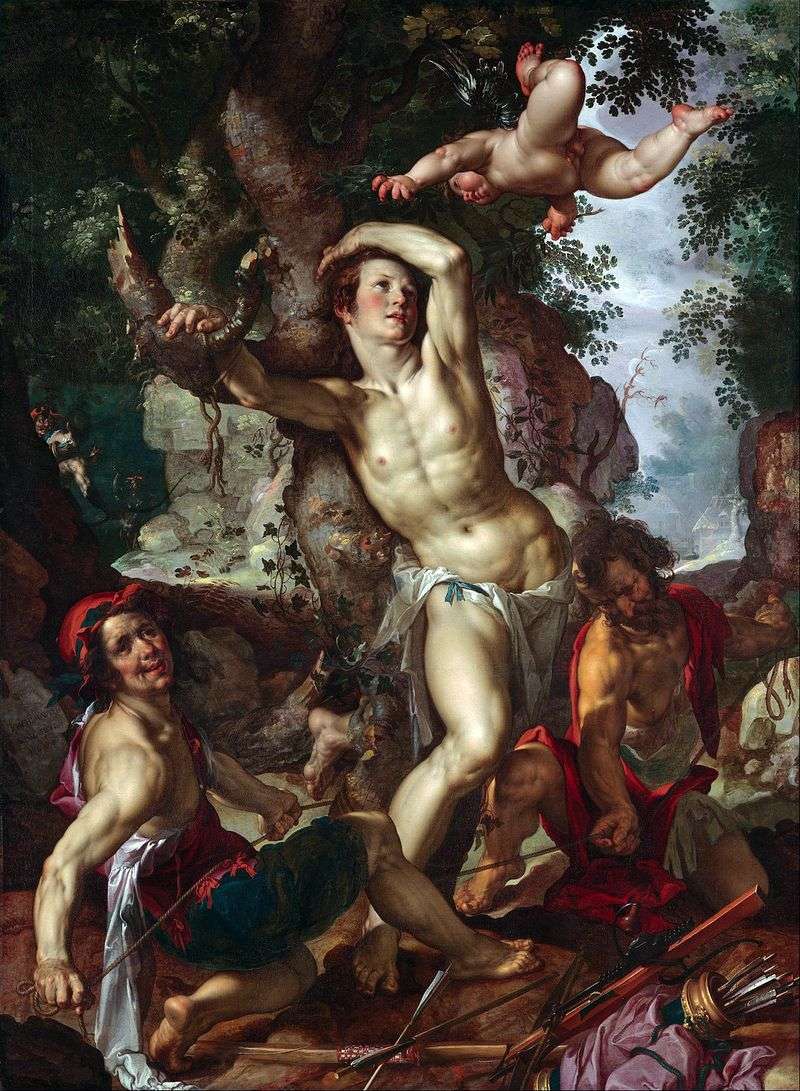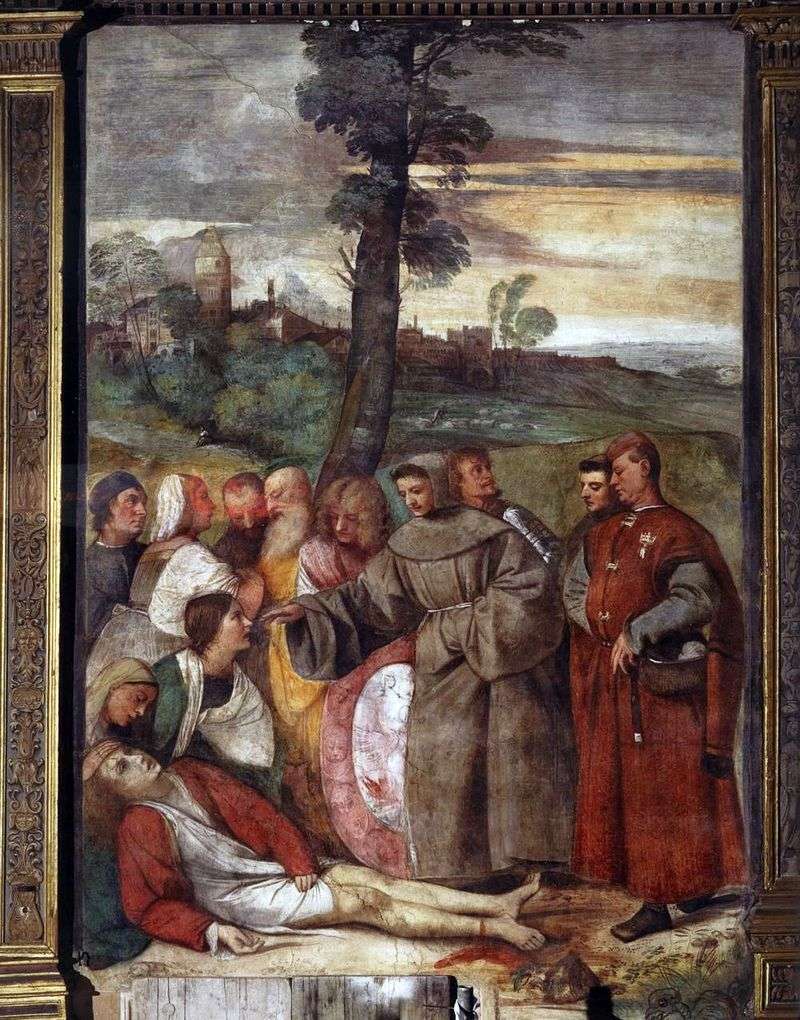
“Saint Sebastian” – one of the masterpieces of the late period of Titian’s work. While working on the painting the artist was already about 85 years old, but the painting of the Renaissance titanium still remained full of power and beauty.
The huge canvas is covered with dynamic, wide, energy-smeared strokes. Saint Sebastian is the most revered saint in Italy, a martyr of the Christian church, according to tradition he healed people from the plague.
The Christian-professed warrior was sentenced to agonizing death, becoming a living target for archers. Traditionally, the saint was depicted tied to a pillar, with dozens of arrows stabbing into his naked body. He does not seem to feel pain, rushing to God with thoughts.
In Titian’s Sebastian there is no Christian humility, rather it is an ancient hero with a mighty and beautiful body. It seems that the background of the picture – the world surrounding the saint – is full of tragic but sublime feelings, possessing Sebastian, accepting torment for the sake of a great idea.
The technique of painting late works of Titian strikes freedom: there is no traditional division into the foreground and background, the figure is inscribed in space, being part of a single light and air environment in which everything is interconnected and inseparable. Titian improvises with a colorful surface, loading it with a pasty, dense, almost tangible layer – it is literally fashioned “with more fingers than with a brush” – and covering it with translucent coating paints, which creates a rich and picturesque effect.
The palette of the artist here is not so diverse: on the contrary, the colors are close, almost monochrome. This freedom of self-expression comes to European painting one or two centuries later, so some researchers consider the picture unfinished.
 Portrait of the daughter of Titian Lavinia by Titian Vecellio
Portrait of the daughter of Titian Lavinia by Titian Vecellio Penitent Mary Magdalene by Titian Vecellio
Penitent Mary Magdalene by Titian Vecellio Saint Sebastian by Guido Reni
Saint Sebastian by Guido Reni Venus, tied Amur’s eyes by Titian Vecellio
Venus, tied Amur’s eyes by Titian Vecellio The death of St. Sebastian by Joachim Eytale
The death of St. Sebastian by Joachim Eytale Self-portrait by Titian Vecellio
Self-portrait by Titian Vecellio Love of the earth and heaven by Titian Vecellio
Love of the earth and heaven by Titian Vecellio Healing of an angry son by Titian Vecellio
Healing of an angry son by Titian Vecellio